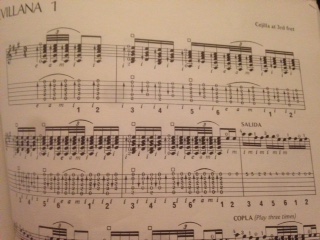|
Ricardo -> RE: Sevillanas Compas base (Feb. 9 2015 17:34:13)
|
quote:
ORIGINAL: johnnefastis
quote:
I think the galloping rasgueado is a must In Sevillanas to give it that light aire (either IAI or as Jason does it here, P(Up) AI. Aso the old stuff like Paco pena is all on the beat - bam, bam , bam, whereas modern players play off the beat a little (like the upstrokes in Jason's), that's what makes it groovy.
Just comparing Jason's to old stuff he really emphasises the first beat of the bar. So if you are thinking in 6s 1 and 4 are really clear.
But in the old material 4 seems to be less emphasised, and though it's less contra its hard to follow . I think that with the combination of the chord change just behind the accent is what's making it confusing for me.
Cheers
Well, it is not about old or new, it is about the speed it needs to go. When it is slower you can play off the accents more (1 or 4 being your accent or beat), but when it is fast you need to pronounce the beat heavily as jason is doing. Some really fast sevillanas don't even stop, they keep going with no break and the accents drive it forward.
Another way to see it is that on tonic chord (not sure how you think of the meter whether the beat starts on 1 or 4 of 6 beats) the measure can have a sort of secondary accent on the 2nd beat (just like fandangos), such that the golpe and rasgueado can be thought of the pick up THAT accent. That is why you can play OFF or after the down beat accent with a faster rasgueado...because you are truly accentuating the 2nd beat there.
Here is how I think of it...using ramzi's A major progression
E-E7-A/A-A-A repeat
123/456....
So 1 and 4 have a strong rhythmic accent or base. But there is harmonic rhythm against that that is accents on 1,3, 5 across the bar line. That is why you can play off of accent 4...to put an emphasis on the tonic chord at count 5. LIke I said before, when going fast or not stopping, we really need to feel that 4 accent strong. IF there is a stop, or a break, between coplas...you come IN on the count 5 OR you can come in on count 4 with rasgueado (as jason does). IT is also for this reason (break and come in relative to the rest of the coplas) that many folks count in reverse of my example, counting the start not on 4 but count that as 1. In other words, Jason is starting on 4 for me, but to others he is starting right on 1.
Hope that makes sense.
|
|
|
|

